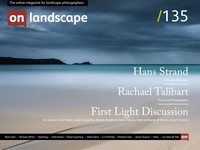A Coastal Traverse

Aaron Dickson
A photographer from Belfast, my interest began through travelling and seeking out wild landscapes. I became full time in 2016, winning the BIPP joint Provisional Photographer of the Year 2017. I Prefer to shoot in overcast skies and subdued lighting for the subtler tones produced.
Lying 100 miles off the tip of Scotland, the Shetland Isles often seem to get overlooked. Being confined to a small box stuck on the edge of most maps of Britain, you would be forgiven for thinking they were nothing but a minor inconvenience for map makers for refusing to sit a bit closer to the mainland. Mention the Isle of Skye and you can easily conjure up images of The Storr, but mention Shetland and most people would be stumped to think of anything other than ponies. This is why we had to go explore it for ourselves.
Taking the car over on the overnight ferry from Aberdeen, we had decided to wild camp for most of the trip. My wife Kerry (a travel blogger) and I had always found this a good way to really discover new landscapes and allow me to maximise my time shooting rather than travelling back and forth from accommodation (and being able to make up a coffee anytime, anywhere is a serious bonus).
Rolling off the ferry in Lerwick early in the morning, our initial plan was to start from the southernmost tip of the mainland and spend a week working our way up to the top. Then we would revisit the areas we thought were worth spending time in. I’ve often found this to be one of the main challenges of landscape photography, no matter how much research you do beforehand until you’ve been somewhere a few times to build up familiarity much of your time can be spent scouting out locations rather than taking any photographs.
Our drive to the cliffs of Sumburgh at the south revealed a completely different type of landscape than the other islands of Scotland. The Shetland isles are much lower, with the highest peak being only 450m tall, the interior land lacks much of the drama seen in Skye or Lewis and Harris. Much of the landscape consists of large undulating hills covered in heather or farmland. Given the right weather and light, I’m sure there may have been some good opportunities for photography inland, but I felt my time would be better spent on the rugged coastline, which Shetland has in abundance. The cliffs at Sumburgh were shrouded in low level cloud, providing the type of light that appeals to me; low contrast with none of the hard shadows created by direct light and ideal for longer exposures.
From here we started our exploration of the main island, using 1:25 000 scale maps of the islands to locate beaches, access roads and any areas that looked particularly interesting. The maps we used were OS maps 466-470. It might seem a bit pricey to buy so many maps for each trip (about £40 for the set) but I find them essential, allowing you to plan routes and pick out points of interest; how can rock stacks and places with names such as The Drongs, Papa Stour and Muckle Roe not be worth checking out?

